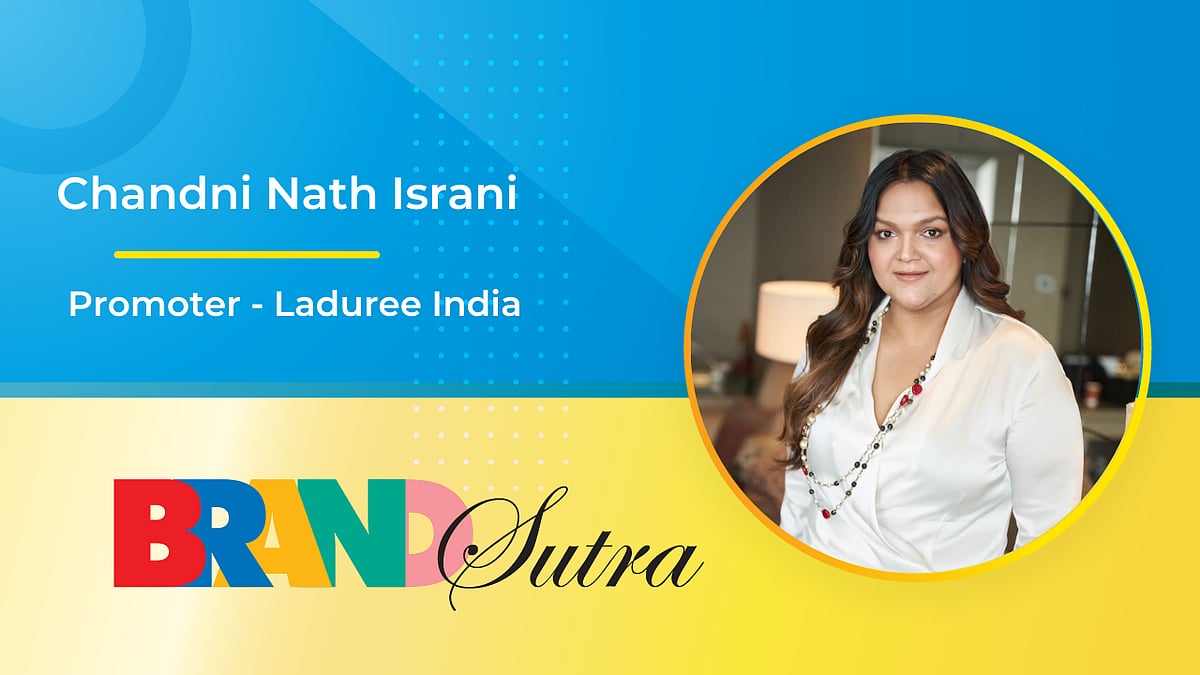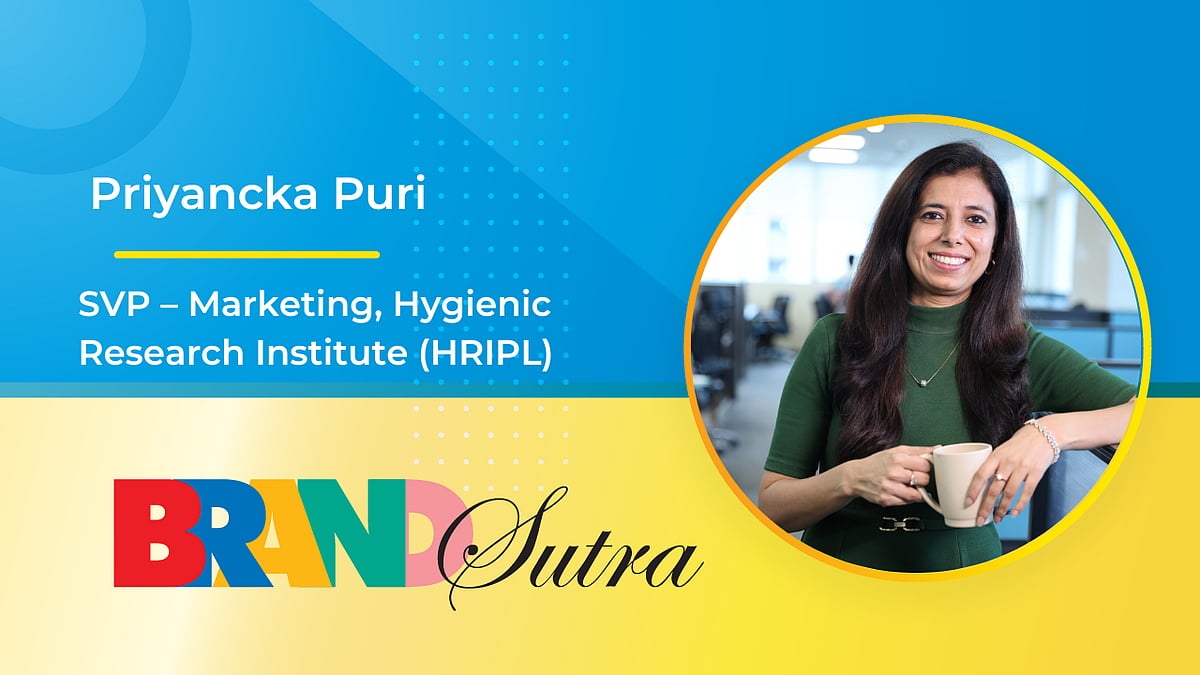Desai Brothers bought Mother’s Recipe in 2002. From pickles, today you also have spices, chutneys, papadams, ready-to-cook products, cooking pastes and even a sharbath. Tell us about the growth of the portfolio and the company.
Desai Brothers started in 1901. We decided to diversify and in 2002 we bought Mother’s Recipe. Initially it was a very small brand, present only in a few geographies like Mumbai and Bengaluru. After we took over, we changed all the recipes of the pickles and made it very authentic and traditional like how grandmothers used to make it for generations. So, no chemical preservatives. We wanted to keep it authentic to home-made achaar. We checked all the recipes, changed all the processes, and set up a new factory. Food was new for us so we had experts coming in and professionals working with us to set everything up.
We have grown organically and inorganically. We have added a few more categories that we feel perfectly complement pickles. We want to make a complete Indian thali. So we asked, ‘What are all the components of the Indian thali which are true to our roots?’ That’s something I feel will never go out of fashion. We focused on that.
Then we saw what other pain points our consumers are facing. Like, when we look at today's mother, she doesn't have that much time. Even if she is at home taking care of the family, she still doesn’t have enough time. Plus, the number of women that have joined the workforce is a huge percentage now. We wanted to remove what we call ‘negative labour’ – stuff like chopping garlic or onion, peeling ginger, all of that, it’s not needed. You still get to finish cooking yourself, but we wanted to take that part away. That’s why we launched ginger-garlic paste. We are one of the top three brands in the country right now nationally present in ginger-garlic paste.
We started doing papads. More than 50 pc of the papad market is unorganised with a lot of low-cost competitors. It is a tough category to be in. It is again a major part of Indian food.
Then chutneys, another integral part of thali. We launched it two to three years back. The mother of today doesn’t necessarily want to be spending so much time making it, or will not know how to make it. If you tell me to make chutney from scratch, I will have to look it up. We want to help them avoid the pain points but we still want people to have that authentic taste. So, it’s still thickly ground, it’s not gummy and pasty, very true to homemade products.
How do you bucket the products? How much does each contribute to sales? Is pickles still the largest and which are the fastest growing?
We have seven categories in India and 16 categories for exports.
What we did for exports and why the category list is longer is because you don’t have access to Indian ingredients as easily as we do here. We are packaging kasuri methi, masalas and ready-to-eat (RTE) food which is consumed more in export countries than in India. There are students and singles who are craving Indian food when abroad. The reason we haven’t bought some of them into India is because the market size is very small for those categories right now. It may grow but right now it’s very small.
Pickles contribute over half the sales but now it’s reducing – not because our absolute sales are going down but because other categories are catching up. The share of ginger-garlic paste is very high; our largest SKU in India is ginger-garlic paste.
In exports, our chutneys are growing. It’s still not larger than pickles but the ginger-garlic paste and chutney categories are getting quite close because the consumption is more frequent. You can finish a whole packet of chutney in a day. I think because of the higher consumption, convenience, lack of skill, lack of time, these categories are growing.
For India, the biggest category is still pickles. We have 60 varieties of pickles. For export too, the top selling category is pickles and the product would be mixed pickles.
You are on marketplaces like BigBasket, Amazon and Instamart. How much of your sales comes from online? What is the offtake on quick commerce?
We have quickly moved from e-commerce to quick commerce. That switch happened so fast, we didn’t even realise. Sales from e-commerce has reduced but it has been compensated by quick commerce. There are strong players like Zepto, Swiggy Instamart, BlinkIt and all of them are doing well. They have their limitations on the number of SKUs that they can put on their platforms. But it’s there in 10 minutes. What happens with food and grocery is that you can’t wait for three to four days. You are ready to wait for a week for clothes, but for food and grocery, you want it instantly or you just walk around to the corner kirana store.
General trade and modern trade is where our majority sales come from.
You are exporting to 50 countries. How big is the share of exports in revenue? Which are the largest international markets?
We do export to 50 plus countries. Largest is where Indians are higher. That’s North America, USA, Canada, Dubai, UAE and Australia.
Within India, which are the stronger markets for Mother’s Recipe?
In India, as a brand, it would be equally distributed, 25 pc in each region.
While your pickles have positive aspects like no preservatives, would you agree that it has not been highlighted in your communication?
FSSAI has classified preservatives into certain categories.
We preserve products naturally. We save with salt and oil, just like our grandmothers and mothers did. They have termed them as Class-1 preservatives – which includes sugar, salt, vinegar, honey, spices and edible oils. Now these are all in our pickles and these are just natural ingredients. Because they have termed that as Class-1 preservatives, I cannot claim that our products have no preservatives.
And the Class-2 preservatives are chemicals, which we do not put in any of our products. This is something consumers are not aware of. So, if I write ‘No Class-2 preservatives’, consumers are going to think that we have Class-1 preservatives, but then they do not know that Class-1 is just your salt and oil. To educate consumers about this is not easy. So, basically, I cannot claim ‘No preservatives’.
How wide is your distribution network in India (retail presence)? How is this growing?
We are present in modern trade and general trade. We are present in food services which is the HoReCa segment (hotels). We have a presence in the central defence stores.
Our distribution is weighted equally in all four regions. Now it’s just about increasing our depth. We cover tier-1, tier-2 and tier-3.
How big are tier-3 towns and beyond in terms of sales?
It again depends on the category. Now, if homes in tier-3 make their chutneys or pickles at home then the consumption for those categories slightly reduces, but we are seeing over time that there are less and less people making pickles at home because of how tedious the process is. Also, availability of good quality ingredients is becoming a challenge with the untimely rains etc. causing havoc. Consumption would be higher in tier-1 and metros because there is more working population also.
What is your presence / share in the ‘Packaged Instant Food’ and ‘Ready-to-Cook’ segment? Are these getting more competitive with numerous players from regional to international coming in?
RTC segment in India is very small and it’s mostly penetrated only in the West, and a bit in Bengaluru, Delhi. With e-com, I am hoping that it will increase. We are definitely going to focus on it in the future. We believe that RTC is a segment for the future and it’s only going to grow.
In instant mixes, we only have two to three SKUs. Again, it’s deeply penetrated in the South. Bengaluru, Delhi and Mumbai are the key markets. We focus on instant mixes more for exports than in India.
Our RTC has no chemical preservatives at all. It’s just Bhuna Masala (for instance). Ours is one-step cooking – it has onions, tomatoes, spices and everything. The competition has a masala packaged in a RTC format, calling it RTC, but you still have to add your tomatoes and oil. Ours is a truly RTC format. Again, it’s about educating consumers and being competitive with trade.
In India, the taste and the palette change after every few kilometres, it is said. Mother’s Recipe has created custom pickles for North and South. Are you also seeing customers opening up in terms of choice, going beyond traditional geographic favourites?
My dad keeps saying that it is at every 200kms that the palette completely changes. So, it’s like a new cuisine. It has been challenging and fun to create products because the Butter Chicken you eat in Delhi is not the same that you eat in Pune or Bengaluru. If we try the authentic Butter Chicken, we probably won’t like it because we are used to the slightly sweet Butter Chicken – which is not how they make it in the North.
We make pickles that are not just North and South. We have Punjabi pickle, Maharashtrian, Rajasthani, it’s state-wise. Even in the South, it’s like Karnataka, Andhra, Kerala, they all have different pickles. We have a Bengali pickle. We made 60 variants of pickles and there’s something from every state. We even have Banarasi Stuffed Red Chilli pickle.
We do notice that cross-regional taste choices are happening because there is a lot of migration for workforce or personal reasons. In India, we love each other’s cuisine. We always want to try the local state’s cuisine. I think there’s a lot of scope for that cross-regional movement.
You have made some acquisitions as well. What are the expansion plans you have for Mother’s Recipe? Are you open to acquisitions?
We acquired Elmac which was known for Kasundi and sauces in Kolkata. That’s how we inorganically got into sauces. Kasundi is the largest SKU for Elmac.
We are open for acquisitions, we are looking at investments into other companies. It can be regional competitors that we can pick up for their distribution strength or their products or brand. We are open to any category that complements our brand.
You had recently explored sauces and dips. How were they received?
The sauce category was accepted really well. We are still selling Elmac in West Bengal and North-East.
We played on Mother’s Recipe and launched a brand called ‘Recipe’ – it’s still Mother’s Recipe but with ‘Recipe’ made larger. The trade name is ‘Recipe’ and that’s for world foods that are not Indian. We wanted a completely different look and feel as we did not want to dilute the Indian traditional brand, which is Mother’s Recipe. With Recipe, it’s stuff that our moms and grandmoms never made for us. That’s where all the sauces come in – Chinese, global, all the exotic foods.
We did product innovation in terms of a completely new design with a nozzle on the top. It’s a thin sauce bottle that can fit into your fridge door. It looks more expensive on the shelf than it actually is. It looks very premium but we have made it very affordable at just Rs.55, which is extremely affordable for most Indians. At that price point we are competing against national as well as regional players. We want to give good quality products at an affordable price.
We are doing a smaller SKU at Rs.25 for sauces. That’s a price point that gives you larger volume.
Are there any other new categories or products that you are planning to explore?
There are some extensions planned in the global cuisine space.
Tell us something about the branding strategy. Do you see Mother’s Recipe as a mother brand housing more sub-brands under it?
For Mother’s Recipe we are going to stick to everything traditional and Indian. We do have a more affordable brand called Mother’s Recipe Rozana, which is a larger pack at a more value price point. That would be for more B-class outlets and not A-class outlets.
We already have Elmac, we now have the Recipe for global food. We are going to stick to that for now.
What is the approach to advertising and the use of media? How big is digital today as a part of the media mix? What is the approach to influencer marketing?
Digital is very big. We started investing in digital way before competition. I think we were the first movers in this space and we do spend a lot whether it is social or digital. Influencers, OTT, online media – we look at all of that separately.
Influencers are doing fantastically well. It’s so delightful seeing so many influencers getting into the space. They are so passionate about cooking and making food at home and they do a very good job. Anyone that we feel aligns with our brand ethos, aligns with the same sort of trust, quality, we definitely do like to partner with them. We have done a lot of influencer collaborations in the last six months to a year.
Tell us about the growth plans.
We are focusing on our sales and distribution. We want to increase the number of outlets we are present in every city that we are in right now. We don’t want to go rural yet because I don’t think it aligns with our portfolio of products or our brands. But we definitely want to increase the depth of our coverage.
MN4U SYNDICATE
Feedback: fpjbrandsutra@gmail.com










